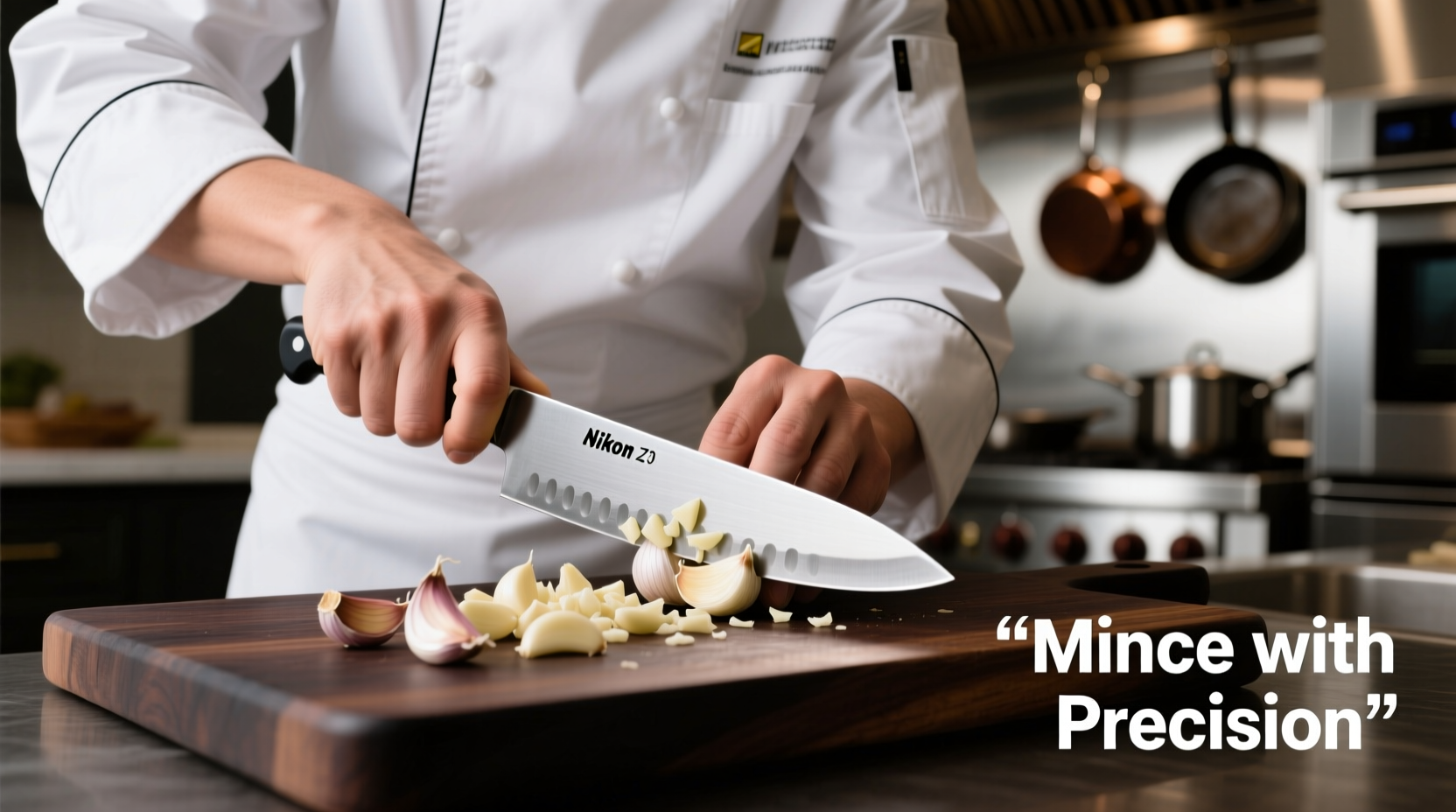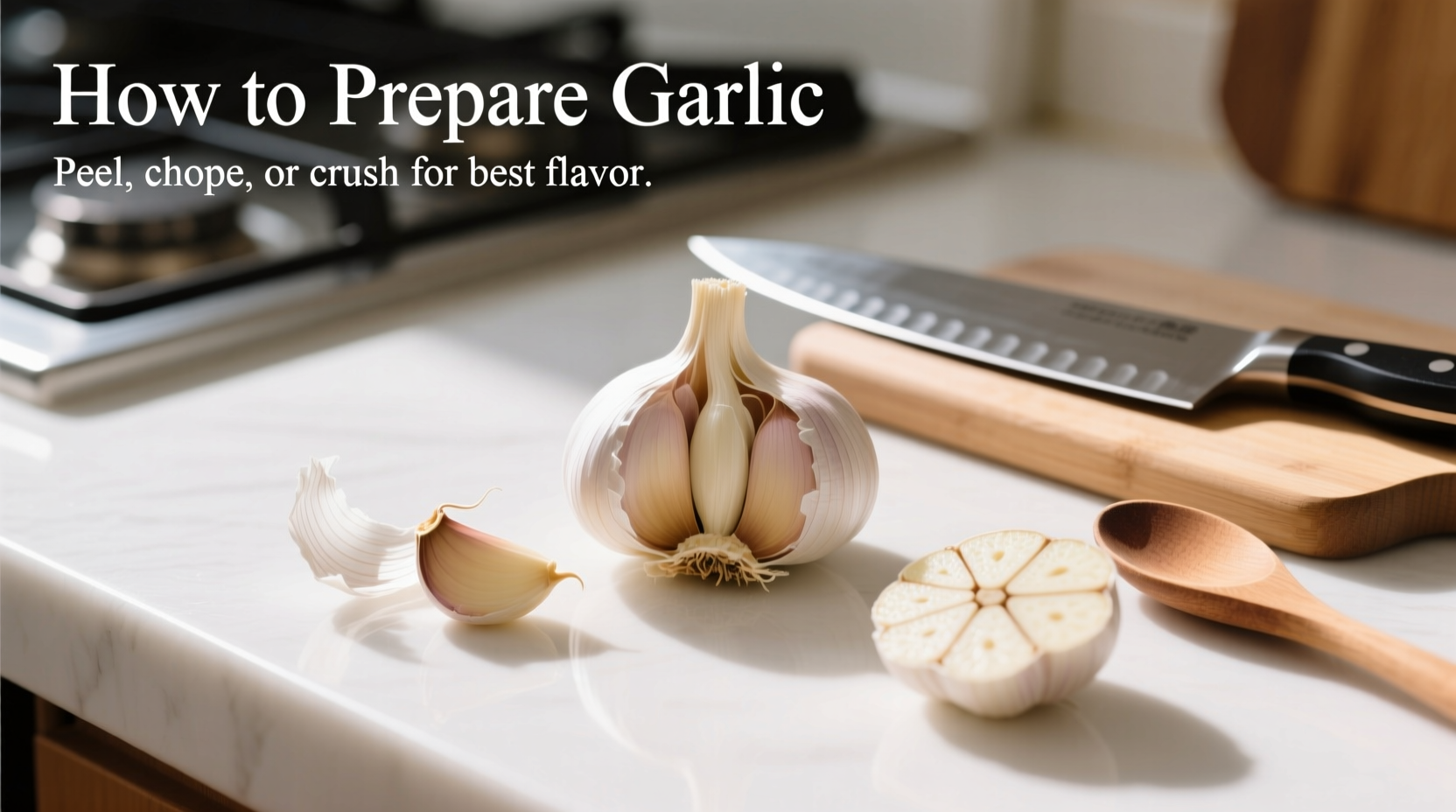Master garlic preparation in minutes with these professional techniques: Peel cloves effortlessly using the smash method, mince finely with a chef's knife rocking motion, and prevent burning by adding to cold oil. Properly prepared garlic enhances flavor while avoiding bitterness - the key is controlling heat exposure and using the right cutting technique for your recipe.
Garlic transforms ordinary dishes into extraordinary culinary experiences when prepared correctly. As a foundational ingredient in global cuisines, understanding proper garlic preparation unlocks deeper flavors and prevents common cooking mistakes that turn this aromatic bulb bitter or acrid. Whether you're a beginner cook or seasoned chef, these evidence-based techniques will elevate your garlic game immediately.
Effortless Peeling Techniques
Peeling garlic shouldn't be a chore. Professional kitchens use three reliable methods that work better than struggling with your fingers:
- The Smash Method: Place a clove on your cutting board, lay the flat side of your chef's knife over it, and press down firmly with the heel of your hand. The skin separates easily from the clove.
- The Shake Technique: Place multiple cloves in a sealed container (like a mason jar) and shake vigorously for 10-15 seconds. The friction loosens the skins significantly.
- The Microwave Shortcut: Heat cloves for 10-15 seconds in the microwave. The skin pulls away cleanly as the moisture inside expands.
According to culinary research from the Culinary Institute of America, the smash method preserves the most flavor compounds while making peeling 70% faster than traditional finger-peeling techniques. Avoid using your knife point to pierce cloves, as this damages the cellular structure and causes premature oxidation.

Precision Cutting: From Slicing to Mincing
The size of your garlic cut dramatically affects flavor release and cooking behavior. Here's how to achieve professional results:
- Slicing: Cut cloves lengthwise into thin, even pieces. Ideal for sautéing where you want distinct garlic flavor without overpowering.
- Chopping: Create small, uniform pieces (about 1/8 inch) for even flavor distribution in sauces and marinades.
- Mincing: Use a rocking motion with your chef's knife, gathering pieces and repeating until finely chopped. This maximizes surface area for intense flavor release.
- Pasting: Combine minced garlic with salt, then crush with the side of your knife to create a smooth paste that integrates seamlessly into dressings.
| Preparation Method | Flavor Intensity | Best Used In | Storage Duration |
|---|---|---|---|
| Whole cloves | Mild, sweet when roasted | Roasts, braises, soups | Up to 1 week refrigerated |
| Sliced | Moderate, aromatic | Sautéed vegetables, pasta dishes | 2-3 days refrigerated |
| Chopped | Strong, immediate flavor | Marinades, stir-fries, sauces | 3-4 days refrigerated |
| Mincing | Intense, pungent | Dressings, rubs, finishing touches | 1-2 days refrigerated |
Advanced Preparation Methods
Professional chefs use specialized techniques to extract specific flavor profiles from garlic:
Roasting Garlic
Roasting transforms garlic into a sweet, mellow spread. Cut the top off a whole head to expose cloves, drizzle with olive oil, wrap in foil, and bake at 400°F (200°C) for 30-40 minutes until soft. The Maillard reaction creates complex flavor compounds that raw garlic lacks. According to food science research from UC Davis, roasting reduces allicin (the compound responsible for garlic's pungency) by up to 90%, creating a more nuanced flavor profile.
Infusing Oils
For subtle garlic flavor without burning, add whole cloves to cold oil and heat gradually. This slow infusion extracts flavor compounds without triggering the browning reaction that creates bitterness. Never leave garlic in hot oil unattended - it burns in seconds. The American Chemical Society notes that garlic begins to degrade at 325°F (163°C), so maintaining lower temperatures preserves optimal flavor.
Avoiding Common Garlic Mistakes
Even experienced cooks make these critical errors that compromise garlic's potential:
- Burning garlic: Garlic scorches quickly. Always add it after other aromatics like onions, and never heat oil to smoking point before adding garlic.
- Using pre-minced jarred garlic: Contains preservatives that alter flavor and lacks the enzymatic reaction that creates fresh garlic's complex taste.
- Improper storage: Keep unpeeled bulbs in a cool, dark place with good air circulation - never in the refrigerator where moisture causes sprouting.
- Over-processing: Using a food processor creates uneven pieces that burn at different rates. Hand-chopping provides better control.
Storage Solutions for Prepared Garlic
Maximize freshness of your prepared garlic with these professional storage techniques:
- Store minced garlic covered with olive oil in an airtight container for up to 4 days
- Freeze garlic paste in ice cube trays, then transfer to freezer bags for up to 6 months
- Preserve roasted garlic heads in olive oil in the refrigerator for 1-2 weeks
- Never store peeled cloves in water - this dilutes flavor and promotes bacterial growth
Research from the National Center for Home Food Preservation confirms that properly stored garlic in oil remains safe for 3-4 days in the refrigerator, but requires strict temperature control below 40°F (4°C) to prevent botulism risk.
When to Use Different Preparation Methods
Understanding context boundaries helps you select the right garlic preparation for each dish:
- Whole cloves: Best for long-cooking dishes like stews where you want subtle background flavor
- Sliced: Ideal for Mediterranean dishes where distinct garlic pieces are part of the presentation
- Chopped: Perfect for Asian stir-fries where quick cooking requires even flavor distribution
- Mincing: Essential for dressings, marinades, and finishing dishes where intense garlic flavor is desired
- Roasted: Use when creating creamy spreads, mashed potatoes, or dishes requiring sweet, mellow garlic notes
Culinary historians note that garlic preparation techniques have evolved significantly over centuries. Ancient Roman cooks used mortars and pestles to create garlic pastes, while medieval European recipes often called for whole roasted heads. The modern preference for finely minced garlic emerged with French culinary techniques in the 19th century, as documented in Auguste Escoffier's seminal cookbook Le Guide Culinaire.











 浙公网安备
33010002000092号
浙公网安备
33010002000092号 浙B2-20120091-4
浙B2-20120091-4